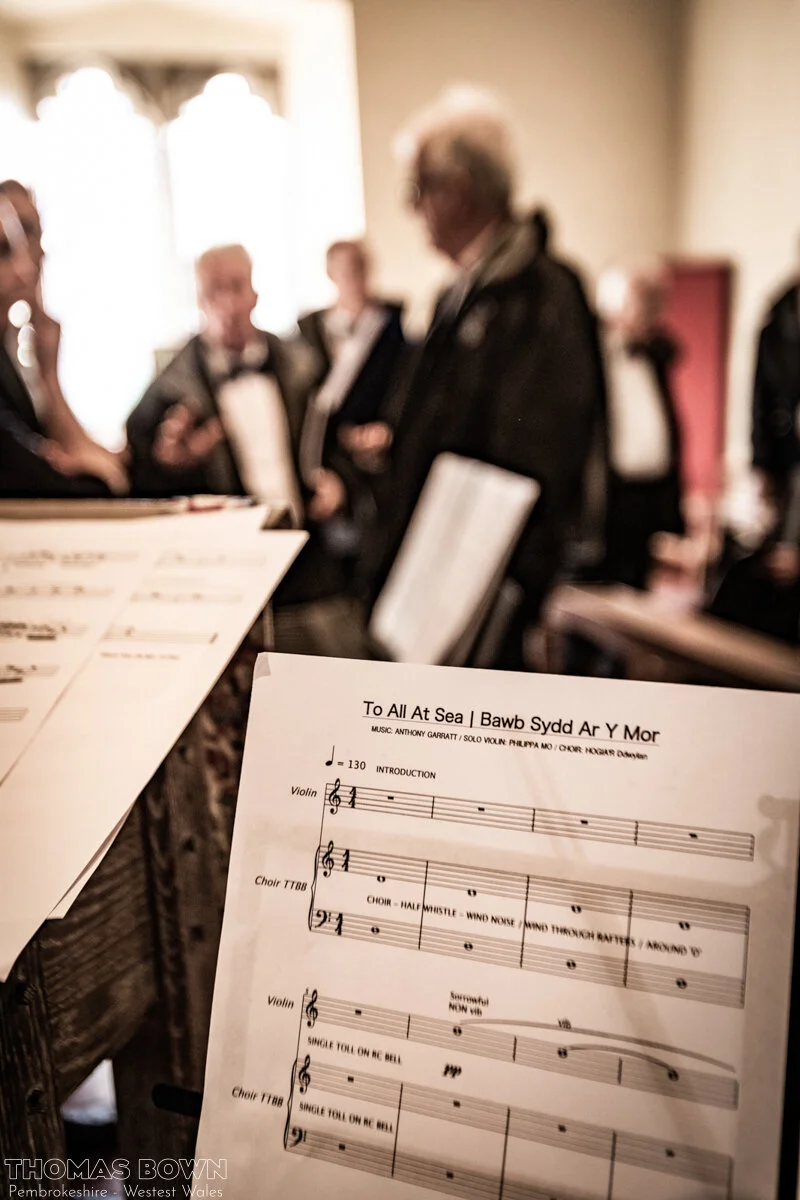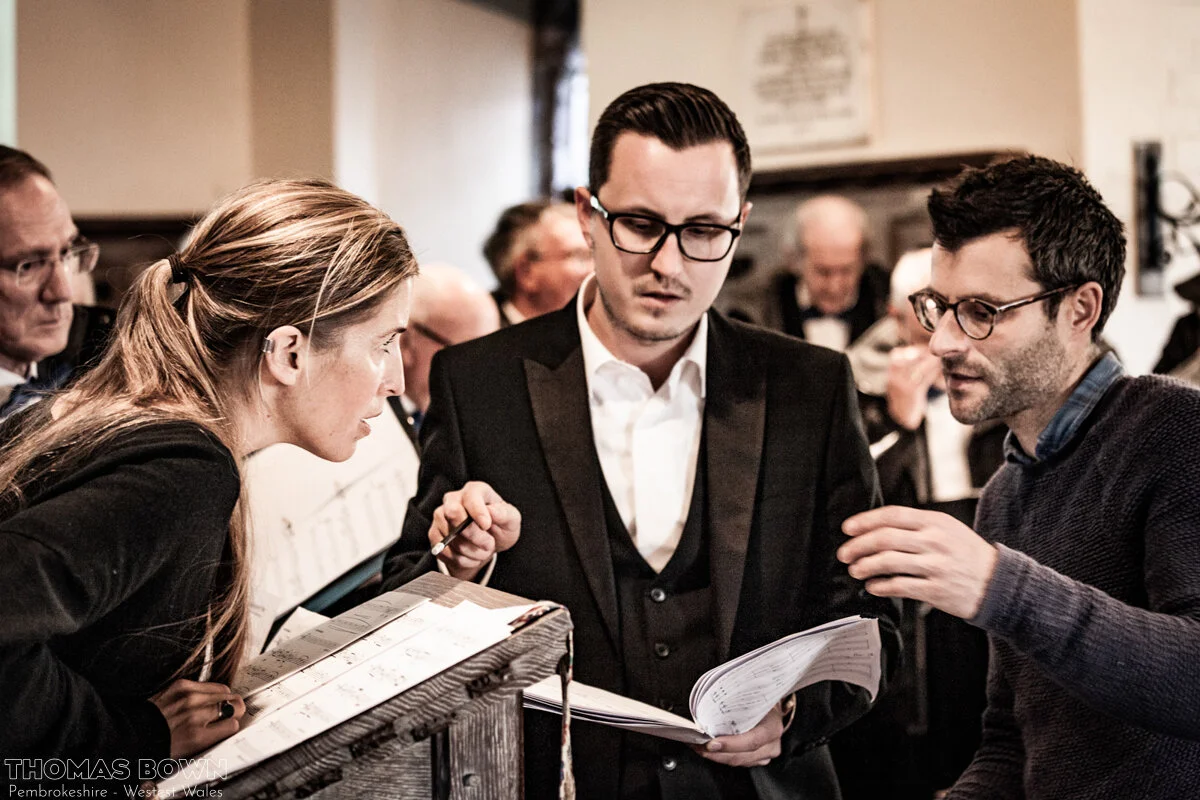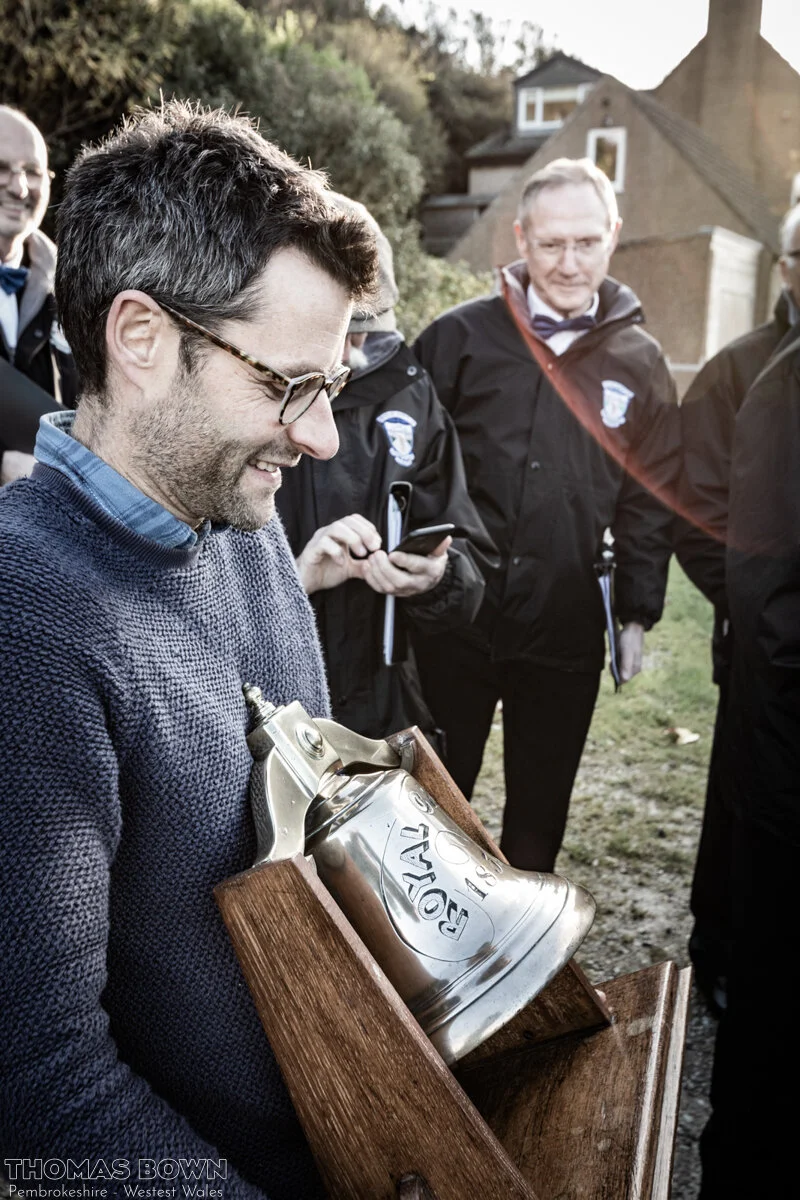Last weekend I took a trip to Anglesey to meet with the artist Anthony Garratt and take some pictures of his latest installation and the accompanying performance piece.
The Royal Charter Storm scoured the West coast of Britain in 1859. The storm was named after a ship which was nearing the end of her journey from Melbourne to Liverpool but was wrecked off the coast of Anglesey. Including the 450 souls that lost their lives that night on Anglesey, another 350 or so were killed in various other wrecks and on land where roofing and masonry were torn from buildings. The church at Cwm yr Eglwys here in Pembrokeshire was also a victim of the storm and is the reason only the gable end remains standing. As a result of the storm, Robert Fitzroy, head of the Meteorological Office at the time, introduced the first gale warning service which was a precursor to today’s Shipping Forecast (which I often enjoy listening to late at night in the comfort of my bed).
The RNLI crew at Moelfre rescued 8 crew members from the cliffs but scores of bodies were recovered to the church of St Gallgo which acted as a temporary mortuary. The process took its toll on the vicar who had the task of identifying the bodies from their personal belongings and facial features. He died only three years after the event. In a tragic twist, the ship was full of prospectors returning from gold mines in Australia and for safe keeping many had their spoils sewn into their clothes; they drowned with their fortune only weighing them down.
160 years on from the tragedy, Anthony has produced a painted panel that sits on a weather vane positioned close to the site of the wreck near Moelfre. The panel has been collecting wind data over 2 months (the time it took the ship to sail from Melbourne) and this was then interpreted into a piece of music. On the night of the 160th anniversary, the piece was performed in St Gallgos church by the Hogia’r Ddwylan choir and violinist, Philippa Mo. It also featured a lyrical section from former National Poet for Wales, Gillian Clarke. As a final note, the ships bell from The Royal Charter was struck at the end of the piece.
It was an emotional night. The music produced from the wind was haunting and beautiful and it was strange to think that the sounds were echoing around the site where the bodies, still sodden and sandy, had been lain out upon the floor before sepulture. The music being generated by natural forces meant it was odd and abstract and the interpretation in strings and human voice had an ethereal quality. It was particularly eerie and poignant to hear the ships bell ringing in the church; the exact sound that would have been heard on the deck that fateful night before it was taken by the waves.
The day was filmed and once the footage is edited will appear here… https://www.toallatsea.co.uk/ Here are some of my pictures from the day. From rehearsals in the church to a visit to the installation before the final evening performance.


















